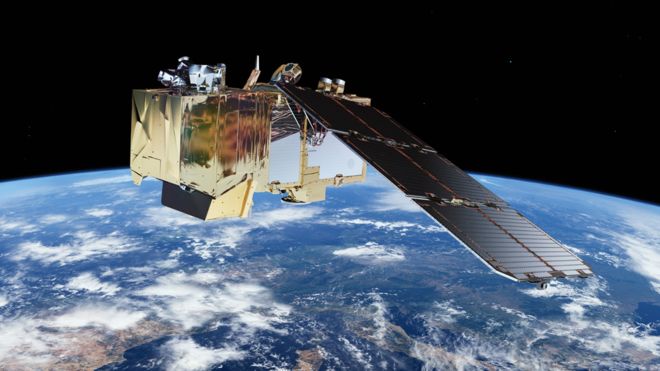The aim is to survey land temperatures to estimate water-use by plants and to show how they transfer that water back to the atmosphere.
The data will also help monitor how much water is available to grow crops and how they are responding to drought.
The new system is being considered for inclusion in the EU's Earth observation programme, Copernicus.
It would be an addition to the Union's ever-growing number of satellites it calls the Sentinels.
A team led by Prof Martin Wooster at King's College London, UK, is exploring options for the next phase of the EU and European Space Agency-coordinated programme.
"The main science goal is to benefit agriculture and increase crop production," he told BBC News.
"Examining our planet and its environment for the ultimate benefit of people is so important with the ever-pressing global challenges we face, and remote-sensing from satellites is a key way to provide a consistent, global view that we can use to track and respond to both short and long-term change."
Prof Wooster's research is part of the development of a satellite concept called the Land Surface Temperature Monitoring (LSTM) mission.
The system would be able to identify the temperatures of individual fields of about 40 square km, 10 times more detailed than is currently possible.
The increased precision would make land temperature much more useful for agriculture.
LSTM would enable researchers to calculate in real time how much water different plants required in different areas, and how often those plants needed to be irrigated.
It could also be used to help computer models predict drought conditions.
As a first step, Prof Wooster is to collect aerial heat maps over London, and various agricultural areas in the rest of the UK, Italy and Germany.
He will be using the most sensitive airborne thermal imager ever built - the Hyperspectral Thermal Emission Spectrometer (HyTES) - which will be flown on a Twin Otter aircraft.
These will be "gold-standard" images where details of ground conditions and the response of crops to drought are carefully recorded.
The data will then be used to design and calibrate the imaging system intended for LSTM.
The hope is that LSTM can become an operational spacecraft sometime in the next decade.
The UK has some of the best Earth observation scientists and engineers in the world. But Britain's continued involvement in the EU-funded Copernicus programme is far from certain after the UK leaves the Union.
The UK government has said repeatedly that it wishes to associate to Copernicus when it becomes a "third country". However, this will have to be negotiated.
"We believe it's really important that the UK's continued participation in Copernicus is negotiated as part of our future relationship with the EU and its member states," Prof Wooster told BBC News.
BBC News
More about:
















































